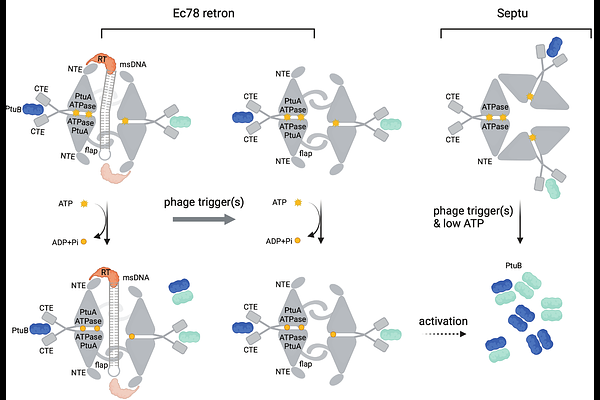Structural Basis for Retron Co-option of Anti-phage ATPase-nuclease

Structural Basis for Retron Co-option of Anti-phage ATPase-nuclease
Li, H.; Wang, B.; Hoffman, R.; Hou, Y.-M.
AbstractRetrons are recently identified bacterial defense systems that employ a tripartite of reverse transcriptase, non-coding RNA (ncRNA) and its derived multi-copy single stranded DNA (msDNA) to sequester effector activity. Phage invasion activates retrons, triggering effector activity and inducing abortive infection and cell growth arrest. Ec78 distinguishes itself from other retrons by leveraging the Septu defense system, a stand-alone ATPase-nuclease pair (PtuAB), by reshaping its phage sensing and molecular assembly processes. To elucidate the evolutionary adaptation of PtuAB by Ec78, we determined electron cryomicroscopy (cryoEM) structures of Ec78 as well as the retron-displaced PtuAB at near atomic resolutions. We show that the Ec78-associated ATPase, PtuA, acquired unique elements that enable its interactions with the reverse transcriptase and the msDNA, as well as self-assembly when displaced by the retron. Supported by biochemical and mutational analysis, we also show that the retron-displaced PtuAB forms a tetramer, unlike its stand-alone counterpart, that indiscriminately restricts the host but, in the presence of the retron, confers a well-controlled immune response, eliciting ATP hydrolysis- and msDNA-regulated targeting to host tRNATyr. Our studies reveal an evolutionary principle for retrons to co-opt conserved enzyme modules for defense in response to different cellular needs.